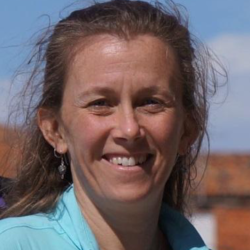Why Can’t I Nominate More Than One of My Dogs?
August 21, 2019 - 3 minutes readLots of people have been asking us this question. Many dog-owning US households include more than one dog. In some cases, these dogs are genetically related (parent and offspring or littermates), while in other cases, they are not. Some multi-dog families care for all of their dogs the same way. In other families, one dog might have a job or an athletic lifestyle while the other dog is a stay-at-home companion. As scientists, we know that studying related dogs with different lives, as well as unrelated dogs with nearly identical life experiences, would allow us to make very interesting scientific comparisons. Why, then, does the Dog Aging Project limit nominations to one dog per household?

There is a scientific answer to this question. The Dog Aging Project seeks to understand how genetics and environment affect aging in dogs. There are several kinds of experimental design that we could employ to pursue our goals. One way would be to enroll pairs of dogs that live in the same household. Another way would be to enroll related dogs in different households. A third way, which is the approach taken by the Dog Aging Project, is an experimental design that focuses on individual dogs in different households.
The key thing to understand is that to ensure robust statistical analyses we must use a consistent experimental design. For all dogs to contribute equally to the study, all must be one type or the other (all individuals or all pairs). We have chosen to focus on individuals to capture the broadest possible diversity of canine biology and lifestyle nationwide. Limiting enrollment to one dog per household allows us to gather information about as many different dogs from as many different environments as possible.
There are also practical reasons for this approach. Including only one dog per household avoids errors and mix-ups during data collection that could undermine the scientific integrity of our research. Additionally, limiting enrollment means that more citizen scientists can be a part of the Dog Aging Project.
Over time, we expect to expand the Dog Aging Project through targeted studies within the Dog Aging Project Pack and through collaborations with other researchers. Future studies may include comparing patterns of health and aging between parents and offspring, investigating how a common environment affects unrelated dogs, and following littermates as they grow up in different households. We ask for information about all dogs in a household during the nomination process so we can reach out to multi-dog households as new opportunities for citizen science arise.

Kate E. Creevy, DVM, MS, DACVIM
Chief Veterinary Officer